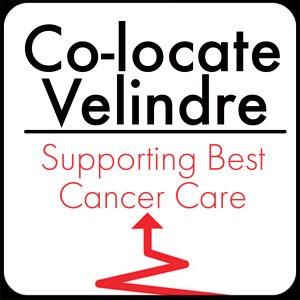‘To co-locate or not to co-locate’. As far as Velindre is concerned this Hamlet-like
question does not arise. The New Velindre Team has claimed that Velindre is a
successful brand, that it should continue to be on a separate site away from other
services, and that its Team answers to no-one regarding the choice of underpinning clinical model except the Welsh Minister of Health. This group tendency is widely known as groupthink. It occurs when a group ignores problems and challenges from outsiders, exaggerates its own abilities in decision-making and underrates its opponents.
This mentality can also lead to dehumanising of opponents. Such a state of mind led managers to hold (and to continue to hold) that there is no alternative ‘to the transposition of the current Velindre site to another similar, nearby but larger site’.
So the New Velindre management mindset, lacking wide clinical consultation, has been led to an untenable position. It must plough on with an outdated, outmoded and unsuitable model despite prodigious evidence that the New Velindre Cancer Centre (nVCC) will not be fit for purpose and certainly not the desired and much-boasted ‘centre of excellence’. The continuing stance is to talk as if ‘expert’ opinion in cancer, is uniquely Velindre’s, so naturally an expertness best suited to its own chosen ends. How else has this inflated self-publicising found its way into the Department of Health’s own language in communications to campaigners? New Velindre also fails to publicly correct its vocal supporters when they describe challengers’ views as in some ways ‘anti-cancer care’ – surely a perfect example of de-humanising the opposition.
This piece therefore explores the consequences of the New Velindre affinity to groupthink. Co-locate’s understanding is that in 2013-14 before the management’s first phase of ‘engagement with stakeholders’ (Velindre’s own words) the Team discarded the standard UK-wide preferred practice. That practice embraces co-location, as opposed to stand-alone, as the desired, underpinning clinical model for new cancer centres. The nVCC Team also then discarded the potential for rebuilding Velindre where it stood, further enabling management to disregard any opposition to the only option now left standing – nVCC’s own proposal of a New Stand-Alone Cancer Centre (nVCC) sited nearby.
This way nVCC insisted on a build that was ‘distanced’ from UHW under all circumstances, with no toleration of dissent from this plan. It had created a culture of ‘There Is No Alternative’ and would not allow Co-location to even be discussed now that this model had been discarded despite its status as the desired best practice throughout the NHS. All this was settled in direct collaboration with Welsh Government from the beginning. Thus was Velindre ‘groupthink’ born, allowing no alternative considerations, sidelining all opposition, and regarding non-groupthink with scorn.
Consequently, the nVCC Proposal went forward and this proposed new cancer
centre became presented as ‘world-class’, at least according to New Velindre’s own public self-description. A Conference Centre was added for good measure as a result. So this stand-alone nVCC became portrayed as explicitly the one needed for the people of South East Wales despite ongoing opposition from many clinicians outside the Velindre leadership ‘orbit’. These clinicians remained a constituency largely ignored by the New Velindre Team so far as the underpinning clinical model is concerned.
These challenges to a ‘stand-alone’ nVCC continued unabated within wider cancer
services. In August 2020, 57 senior clinicians signed a letter insisting this model was still wrong, and sent it to key figures including the Health Minister, the Chief Medical Officer and the CEO of NHS Wales. This followed a similar letter within Velindre itself from over 30 oncologists and senior nurses to the Chief Executive. A Freedom of Information request has put these facts into the public domain. In January 2021, the campaign Save The Northern Meadows and local councillors, among others, publicised a letter of opposition to the stand-alone model signed by 163 senior doctors in cancer drawn from 32 different medical specialties. Even this unprecedented consensus was ignored by nVCC, a behavioural non-response
typical of groupthink.
The nVCC proposal became a Business Model. The underlying model was the preferred choice only of the Velindre Team and the then Welsh Assembly Government, in particular its Health Minister (and future Finance Minister and subsequent First Minister) Mark Drakeford. The Business Model became a formal Business Plan despite local resistance and widespread clinical opposition when plans were drawn for a New Build on the Northern Meadows in 2017. The New Velindre Team submitted a surprise access application plan in February 2020 which had not been disclosed in 2017. This move only intensified local opposition and the Save The Northern Meadows (STNM) came into being in March 2020.
The ever-swelling challenge from the clinical community inside and outside Velindre has been dismissed or ignored without explanation by both New Velindre and Welsh Government and continues to be. This is a feature classically associated with groupthink.
And the story doesn’t end there. More in Part 2 soon.

